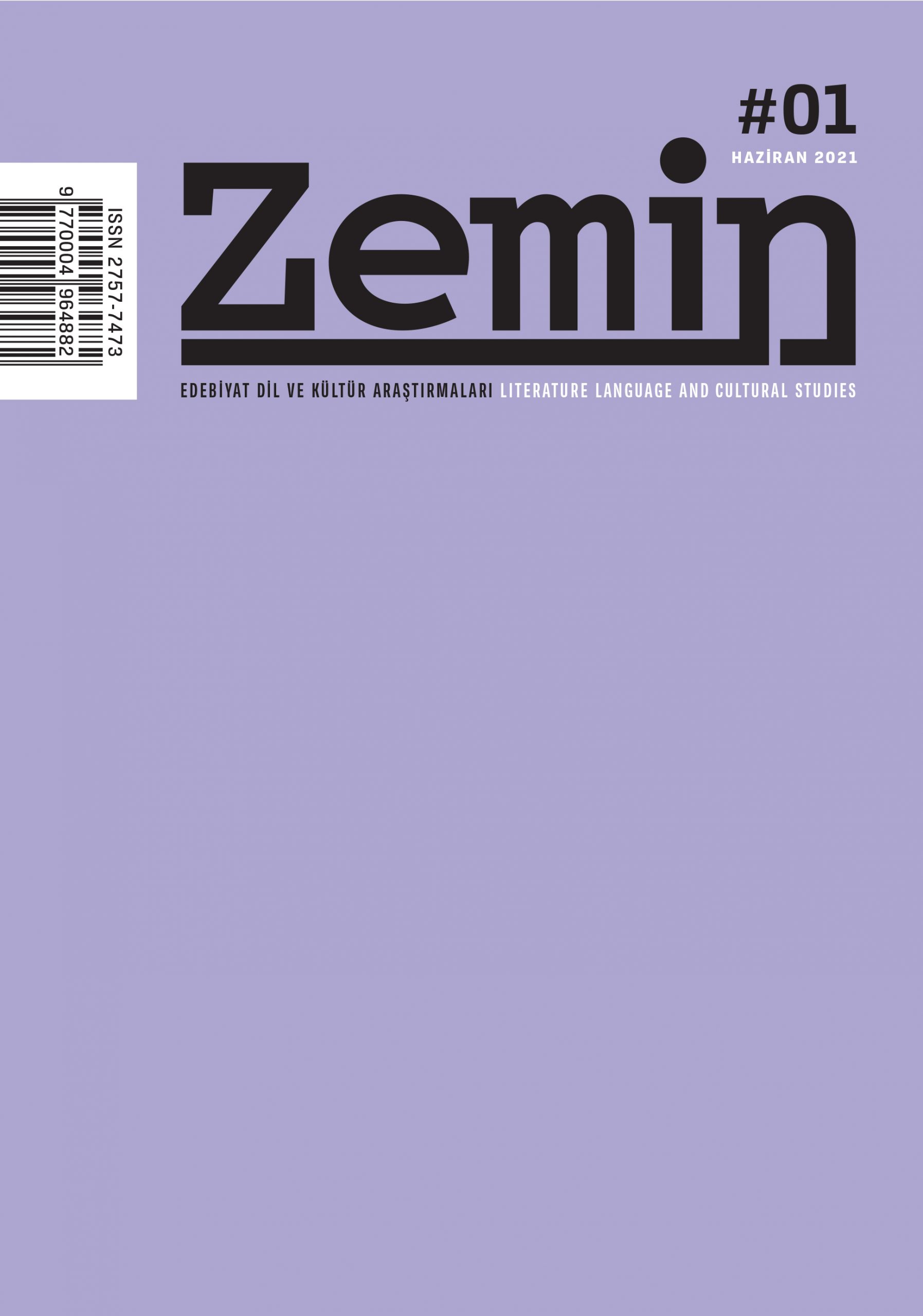The Meaning of Anthropomorphism, Encountering Their End: Non-Human Animals (Animot) in the Generation of 1950 Short Stories
DOI:
https://doi.org/10.5281/zenodo.8006682Keywords:
1950 Generation Storytelling, Critical Animal Studies, Anthropomorphism, Anthropocentrism, Interspecies Narrative, FaceAbstract
While the generation of 1950 in modern Turkish literature indicates a break on the one hand, it is included in the generation terminology as it contains some similarities/ patterns on the other. Animal existences constitute one of the patterns in the storyline of the 1950 generation. Animals that talk, think, and act, as well as animals that cannot be interpreted and restrained as a result of the human gaze, find their place in the plot within the context of anthropomorphism. Anthropomorphism, with its possibilities and limitations, can point to limits by problematizing the human-animal binary opposition. It can also make clearer the dichotomy of anthropomorphic assumptions. The use of anthropomorphism, which oscillates between boundaries and binary oppositions in stories, brings along with it discussions of ethics and aesthetics. On this point, with central questions like “How does the alienating effect of the inter-species narrative arise?” and “What kind of opening can confrontation / a mutual gaze provide?” this article opens up a discussion on ethics and aesthetics by drawing on perspectives offered by critical animal studies and through close readings.
References
Adams, Carol Jacob. Etin Cinsel Politikası: Feminist-Vejetaryen Eleştirel Kuram. Çeviren Mehmet Emin Boyacıoğlu ve Güray Tezcan. İstanbul: Ayrıntı, 2010.
Adem Gergöy, “Hayvanını Kuşana[maya]n İnsan: Bilge Karasu Metinlerinin Sevgi Politikası,” Metafor, s. 3 (2018): 5-25.
Adnan Özyalçıner, “Soruşturma Yanıtları,” Adam Öykü, s. 53 (2004): 35-37.
Agamben, Giorgio. Açıklık: İnsan ve Hayvan. Çeviren Meryem Mine Çilingiroğlu. İstanbul: YKY, 2012.
Astrid Erll, “Generation In Literary History: Three Constellation of Generationality Genealogy and Memory,” New Literary History, s. 45 (2014): 385-409.
Atılgan, Yusuf. “Kümesin Ötesi.” Bütün Öyküleri, 33-37. İstanbul: YKY, 2002.
Atılgan, Yusuf. “Yük.” Bütün Öyküleri, 51-57. İstanbul: YKY, 2002.
Calarco, Matthew R. Animal Studies The Key Concepts. Londra ve New York: Routledge, 2021.
Castle, Gregory. “Matter In Motion In Modernist Novel.” A History of The Modernist Novel, editör Gregory Castle, 1-37. Cambridge: Cambridge University, 2015.
Coetzee, John Micheal. The Lives of Animals. Princeton: Princeton University, 1999.
DeKoven, Marianne. “Kafka’s Animal Stories: Modernist Form and Interspecies Narrative.” Creatural Fictions Human-Animal Relationships in Twentieth and Twenty First Century Literature, editor David Herman, 19-41. Hampshire: Palgrave Macmillan, 2016.
Demir Özlü, “Soruşturma Yanıtları,” Adam Öykü, s. 53 (2004): 41-42.
Derrida, Jacques. The Animal That Therefore I Am. Çeviren David Wills. New York: Fordham, 2008.
Derrida, Jacques. “Şiddet ve Metafizik: Emmanuel Levinas’ın Düşüncesi Üzerine Deneme.” Yazı ve Fark, çeviren P. Burcu Yalım, 107-207. İstanbul: Metis, 2020.
Dirlikyapan, Özata Jale. Kabuğunu Kıran Hikâye Türk Öykücülüğünde 1950 Kuşağı. İstanbul: Metis, 2013.
Edgü, Ferit. “I. Kaçkın/ Öndeyiş.” Kaçkınlar, 17-27. İstanbul: Sel, 2013.
Elis Şimşon, “Levinas ve Bobby: Bir Köpeğin Levinas’ın Etiğindeki Rolü,” Cogito, s. 80 (2015): 37-52.
Erbil, Leylâ. “Bilinçli Eğinim I.” Hallaç, 9-21. İstanbul: Can, 1988.
Erdal Öz, “Soruşturma Yanıtları,” Adam Öykü, s. 53 (2004): 42-44.
Ezgi Hamzaçebi, “Varoluş Aralığında Yeryüzü Halleri,” Metafor, s. 3 (2018): 56-78.
Fatih Altuğ, “Anlam Pireleri: 1950’lerin Modernist Öykülerinde Hayvan ve Varoluş,” Metafor, s. 3 (2018): 78-101.
Feridun Andaç, “Bir Kuşağı Adlandırmak,” Adam Öykü, s. 53 (2004): 5-9.
Kafka, Franz. “A Report to An Academy.” Selected Short Stories of Franz Kafka, çeviren Willa Muir ve Edwin Muir, 168-181. New York: The Modern Library, 1993.
Kantarcıoğlu, Sevim. Türk ve Dünya Romanlarında Modernizm. Ankara: Akçağ, 2004.
Kartal, Onur. Başkasının Politikası: Husserl, Heidegger, Levinas. İstanbul: İletişim, 2017.
Kutlar, Onat. “Kediler.” İshak, 63-79. İstanbul: YKY, 2009.
Kutup, Selver Sezen. “Yok’larla Konuşabildi O: Sevim Burak Metinlerinde İnsan-dışı Hayvanlar, Nesneler, Oluşlar.” İkinci Bir Yaşam Sevim Burak’ın Edebiyat Dünyası, hazırlayan Mustafa Demirtaş, 22-41. İstanbul: YKY, 2018.
Levinas, Emmanuel. Totality and Infinity. Çeviren Alphonso Lingis. Pennsylvania: Duquesne, 1969.
Levinas, Emmanuel. “Varlıkbilim Temel Midir?” Sonsuza Tanıklık Emmanuel Levinas’tan Seçme Yazılar, çeviren Erdem Gökyaran, hazırlayan Zeynep Direk ve Erdem Gökyaran, 76-86. İstanbul: Metis, 2003.
Leylâ Erbil, “Soruşturma Yanıtları,” Adam Öykü, s. 53 (2004): 30-33.
Nezihe Meriç, “Soruşturma Yanıtları,” Adam Öykü, s. 53 (2004): 24-25.
Orhan Duru, “Soruşturma Yanıtları,” Adam Öykü, s. 53 (2004): 33-35.
Özen Nergis Dolcerocca, “‘Bu kadar alegori yeter!’: Hayvan, Dil ve Mülksüzlük Üzerine,” Cogito, s. 87 (2017): 185-198.
Payne, Mark. The Animal Part Human and Other Animals in The Poetic Imagination. Chicago: University of Chicago, 2010.
Rebaté, Jean-Michel. “Modernism and The French Novel: A Genealogy (1888-1913).” A History of The Modernist Novel, editör Gregory Castle, 86-110. Cambridge: Cambridge University, 2015.
Robertson, Ritchie. “Modernist Style and The ‘Inward Turn’ In German-Language Fiction.” A History of The Modern Novel, editör Gregory Castle, 293-311. Cambridge: Cambridge University, 2015.
Ryan, Derek. Hayvan Kuramı Eleştirel Bir Giriş. Çeviren Ayten Alkan. İstanbul: İletişim, 2019.
Simmel, Georg. “Metropol ve Zihinsel Hayat.” Bireysellik ve Kültür, çeviren Tuncay Birkan, 317-330. İstanbul: Metis, 2009.
Tacettin Ertuğrul, “Jacques Derrida: ‘Hayvan’ Meselesini İnsan-Hayvan İkiliğinin Ötesinde Düşünmek,” Cogito, s. 80 (2015): 174-196.
Taylor, Nik. “Anthropomorphism and the Animal Subject.” Anthropocentrism Humans, Animals, Environments, editör Rob Boddice, 265-283. Leiden- Boston: Brill, 2011.
Thomas Nagel. “What Is It Like To Be A Bat?.” The Philosophical Review, s. 83 (1974): 435-450.
Victor Şklovski. “Bir Teknik Olarak Sanat.” Çeviren Nazan Aksoy ve Bülent Aksoy. Defter, s. 5 (1988): 177-195.
Downloads
Published
How to Cite
Issue
Section
License
Copyright (c) 2021 Mehmet Şamil Dayanç

This work is licensed under a Creative Commons Attribution 4.0 International License.



